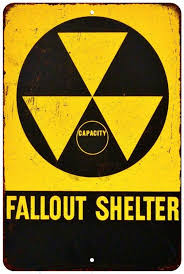Today is a good day-- it was above freezing for most of the daylight hours. There are 5 inches of snow on the ground... maybe 6 or 7. It's hard to know, with the freeze-and-thaw, snow-and-rain cycle that has been February 2021. Is this just the snow from Thursday? Did we have snow Monday, too? Constant shoveling has created a small mountain of debris that is starting to avalanche back across the sidewalk.
And of course we're still in quarantine lite, so there'll be no eating out or going to the movies while we wait for spring. Our new entertainment is looking at the stories told by the animal tracks criss-crossing what once was our lawn.
In light of all that, what better way to occupy an hour than with a gardening book? Good Weed, Bad Weed is a delightful guide to the stuff that actually *wants* to grow in your garden. The author, like me, is a big advocate of a lawn sprinkled with tiny flowers. I have a rule never to mow till after Easter, and even then sometimes I leave patches of of "lawn" that are full of snowdrops and buttercups for another month. The borough has yet to come after me-- if you make the patches look tidy enough, I guess they come under the classification of "weedy garden" rather than "unmowed grass."
 |
| A close-up of my lawn last spring |
The book confirmed a lot of things I already knew or suspected. Thistle must be eradicated, preferably by pulling rather than digging. That stuff I thought might be crabgrass? It is, and my lawn would be better off without it, even though it *is* green and sort of vaguely grassy. Wild garlic and onion can absolutely be eaten, which is a good thing because it is almost impossible to completely eradicate them from the lawn and garden. Violets and buttercups are a joy and should be encouraged wherever possible. Fleabane and wild aster are not everybody's thing, but there's nothing wrong with cultivating them if you like.
I did learn some very useful new information. Don't pull dandelions until they are blooming, because the blooms are cheerful and the plant won't spread till it goes to seed. The best approach to a lawn overfull of crabgrass, wild onions, and henbit is to reseed the lawn every year in early spring. (The book says to seed again in fall, but in our situation, when we are still raking in mid-December, that would probably be pretty ineffective.) Plaintain (not the fruit, the broadleaf weed) only grows in compacted soil, so an aerator will discourage it. The thing I always thought was bugleweed is probably henbit, and the thing with the little yellow trumpet-shaped flowers is not clover but wood sorrell. By any name, both are welcome in the grass, and neither in the flower beds!
Now if only the snow would melt, I can get out there and start pulling my weeds and appreciating my wildflowers!
